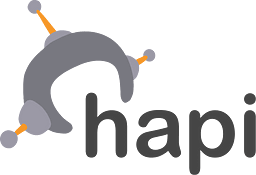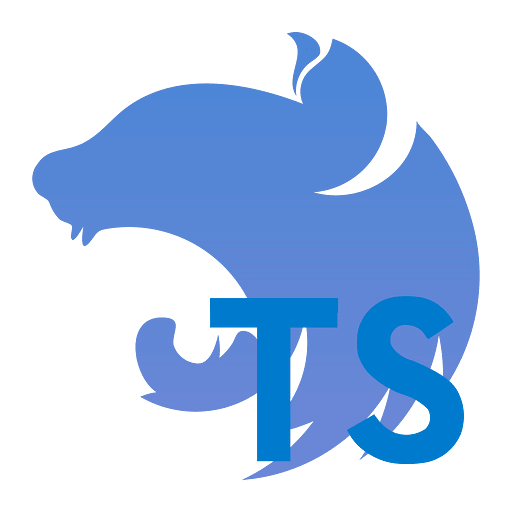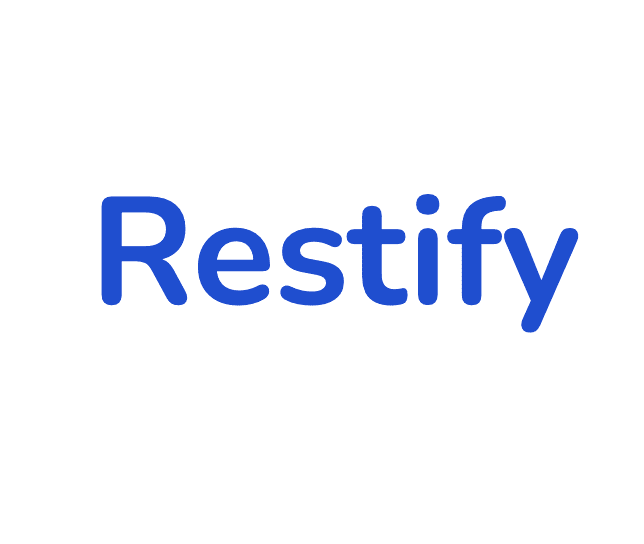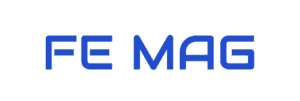As technology continues to evolve and cloud-based applications become more prevalent, Node.js API frameworks have become essential tools for building robust and scalable server-side applications. However, with a plethora of options available, choosing the right framework can be a daunting task.
In this post, we’ll explore the top 10 Node JS API frameworks in 2023, looking at their key features, performance, scalability, ease of use, security, and popularity, as well as the pros and cons and the big companies and projects using them. Whether you’re building a new application from scratch or modernizing an existing one, this guide will help you make an educated choice about which Node.js API framework to use.
1. Express

Express is a fast, minimalist, and flexible Node.js web application framework that provides a set of powerful features for creating APIs and web applications. It’s a popular choice for building APIs due to its simplicity, ease of use, and performance.
Popularity:
- GitHub Stars: 59,9k+
- NPM Weekly Downloads: 29M+
Key Features:
- Robust routing capabilities
- Middleware support
- Template engine integration
- Fast and efficient performance
- Good error-handling capabilities
Performance:
Express is known for its speed and efficiency, making it an excellent choice for high-performance APIs. It has a low overhead and can handle a large number of requests with ease.
Scalability:
Express offers excellent scalability features, including support for clustering and load balancing. This makes it a good choice for applications that require high availability and can handle a large number of concurrent connections.
Ease of Use:
Express is easy to learn and has a simple and intuitive API. It’s also well-documented and has a large and active community of developers, which means that you’ll have plenty of resources available for getting started and troubleshooting issues.
Security:
Express provides a range of features and options for protecting your API, including built-in support for SSL, CSRF protection, and other security best practices. It also has a good reputation for being secure and reliable.
Pros:
- Minimalist and flexible framework
- Easy to learn and use
- Good community support
- Good error-handling capabilities
Cons:
- Lack of built-in support for certain features
- Limited in terms of architectural patterns
Companies and Projects using this framework:
- Accenture
- IBM
- Uber
- Fox
- Yandex
Express is the most widely-used Node.js framework. It is a reliable and versatile framework that is suitable for various types of applications, from small projects to large-scale enterprise applications.
Overall Ratings: 9/10
2. Koa

Koa is a lightweight and expressive Node.js web application framework that was developed by the team behind Express. It’s designed to be highly modular and allows developers to create APIs and web applications with minimal boilerplate code.
Popularity:
- GitHub Stars: 33,6k+
- NPM Weekly Downloads: 1.5M+
Key Features:
- Lightweight and modular architecture
- Async/await support
- Flexible middleware handling
- Improved error handling
- Built-in request and response objects
Performance:
Koa is known for its speed and efficiency, with a lightweight architecture that can handle a large number of requests with ease. It also uses the latest ES6/ES7 features, such as async/await, to ensure that your code runs smoothly and efficiently.
Scalability:
Koa provides a range of features and options for scaling your API, including support for cluster and worker processes. It also has a highly modular architecture that allows you to add and remove middleware as needed, making it a good choice for applications that require high scalability.
Ease of Use:
Koa is designed to be highly modular and flexible, which makes it easy to use for developers who are familiar with Node.js. Its syntax is also very clean and readable, which makes it easy to write and maintain code.
Security:
Koa provides a range of features and options for securing your API, including built-in support for CSRF protection and other security best practices. It also has a reputation for being secure and reliable.
Pros:
- Lightweight and flexible architecture
- Easy to use and learn
- Supports the latest ES6/ES7 features
- Good error-handling capabilities
Cons:
- Lack of built-in support for certain features
- Smaller community than other frameworks
Companies and Projects using this framework:
- Albiorix Technology
- Devico
- Infinity Soft Systems
- KK Tech
- Paralect
Koa is a highly modular and lightweight framework that is intentionally created to be user-friendly and scalable. While it may not have the same level of popularity or community support as other frameworks, it’s still a great choice for developers who are looking for a lightweight and flexible Node.js API framework.
Overall Ratings: 8/10
3. Hapi

Hapi is a robust and enterprise-grade framework for building web applications and APIs. It offers a rich set of features that make it easy to create and manage complex applications.
Popularity
- GitHub Stars: 14,2k+
- NPM Weekly Downloads: 664k+
Key Features
- Plugin system for extensibility and modularity
- Support for input validation, authentication, and caching
- Easy integration with other third-party services
- Simplified error handling and logging
- WebSocket support for real-time communication
Performance
Hapi is known for its high performance and scalability. It uses a powerful request lifecycle and caching mechanisms to handle a large number of requests without sacrificing performance.
Scalability
Hapi is designed to handle high-traffic applications and offers various features such as load balancing and horizontal scaling.
Ease of Use
Hapi has a straightforward and intuitive API that makes it easy to get started with building web applications and APIs. It also offers extensive documentation and tutorials to help developers.
Security
Hapi has a strong security model with built-in support for various security features such as authentication, input validation, and SSL encryption.
Pros:
- Extensive plugin system for easy integration with third-party services
- Great performance and scalability
- Strong security model
- Support for real-time communication
Cons:
- Limited community support compared to other Node.js frameworks
- Relatively steep learning curve for beginners
- Heavy reliance on plugins may lead to compatibility issues
Companies and Projects using this framework:
- Walmart
- Yahoo
- Mozilla
- Paypal
- NPM
Hapi is a great choice for building enterprise-grade web applications and APIs, thanks to its strong security model, excellent performance, and easy-to-use API. However, it may not be the best choice for beginners or those looking for a more lightweight framework.
Overall Ratings: 8/10
4. Fastify

Fastify is a fast and low-overhead Node.js web framework. It is designed to be highly performant and is built with a focus on speed and scalability. The framework is also lightweight, easy to use, and developer-friendly.
Popularity
- GitHub stars: 26.4k+
- NPM weekly downloads: ~1M
Key Features
- High-performance, low overhead
- Built-in support for various plugins and extensions
- Detailed and comprehensive documentation
- Highly customizable
- Support for HTTP/2, WebSockets, and other modern web standards
- Built-in JSON schema validation
Performance
Fastify is designed to be highly performant, with a focus on speed and low overhead. It uses the latest JavaScript language features, such as async/await and Promises, to make use of modern Node.js performance optimizations.
Scalability
Fastify is highly scalable and can handle high-traffic loads without compromising performance. It can handle a large number of requests simultaneously and can be scaled easily by adding more servers or using load balancers.
Ease of Use
Fastify is easy to use and has a simple, developer-friendly API. Additionally, it offers great customization options that enable you to integrate your own plugins and extensions to broaden the range of its capabilities.
Security
Fastify has built-in support for various security features, including built-in JSON schema validation and support for CORS (Cross-Origin Resource Sharing).
Pros
- High-performance, low overhead
- Built-in support for various plugins and extensions
- Comprehensive documentation
- Highly customizable
- Support for modern web standards
Cons
- Not as widely used as other Node.js frameworks
Companies and Projects using this framework:
- Microsoft
- Discord Bot Catalogs
- JobPair
- Care.com
- Amerisave
Fastify is a popular and performant Node.js web framework with a focus on speed, scalability, and ease of use. It is highly customizable and comes with built-in support for various plugins and extensions.
Overall Ratings: 9/10
5. NestJS

NestJS is a progressive Node.js framework for building efficient, reliable, and scalable server-side applications. It is designed to help developers create clean and maintainable code, making it easier to manage complex projects. It is built with TypeScript and combines elements of object-oriented programming, functional programming, and reactive programming.
Popularity:
- GitHub stars: 54.4k+
- NPM weekly downloads: 2.1M+
Key Features:
- Modular architecture
- Extensive documentation and support
- Fast and scalable
- Testability and maintainability
- Built-in support for WebSockets
- Support for microservices architecture
- Built-in security features
Performance:
NestJS is known for its fast performance and scalability. It is built on top of Express and Fastify, but with additional features and optimizations.
Scalability:
NestJS is designed to handle large-scale applications and provides built-in support for microservices architecture. It can be utilized to build applications that can scale to handle a large number of requests.
Ease of Use:
NestJS is relatively easy to use for developers who have experience with TypeScript or JavaScript. It comes with extensive documentation and a vibrant community that provides support for developers.
Security:
NestJS provides built-in security features such as CSRF protection, input validation, and parameter mapping. It also supports various authentication methods such as JWT, Passport, and OAuth2.
Pros:
- Modular architecture makes it easy to manage complex projects
- Extensive documentation and community support
- Built-in support for WebSockets and microservices
- Provides built-in security features
Cons:
- The learning curve can be steep for developers who are not familiar with TypeScript
- Some developers may find it to be overly complex for smaller projects
Companies and Projects using this framework:
- Adidas
- Autodesk
- Neo4j
- Decathlon
- SitePen
NestJS is a powerful Node.js framework that provides a modular architecture, built-in security features, and extensive documentation. It is well-suited for building large-scale applications that require performance and scalability, making it a popular choice among developers in 2023.
Overall Ratings: 9/10
6. LoopBack

LoopBack is a highly extensible, open-source Node.js framework for building APIs and microservices. It is developed by IBM and offers a range of features, including command-line tools, dynamic models, and a built-in API explorer.
Popularity:
- GitHub stars: 13.3k+
- NPM weekly downloads: 30k+
Key Features:
- Supports various data sources, including relational databases, NoSQL databases, and REST APIs.
- Built-in API explorer for easy testing and documentation.
- Highly customizable, with a wide range of plugins and extensions available.
- Supports role-based access control and various authentication options.
Performance:
LoopBack is designed for high performance and scalability, with a focus on supporting complex enterprise applications.
Scalability:
LoopBack is highly scalable and can handle high loads, making it an excellent choice for enterprise applications.
Ease of Use:
LoopBack is relatively easy to use, with a simple command-line interface and a range of pre-built components and plugins.
Security:
LoopBack has robust security features, including role-based access control and support for various authentication mechanisms.
Pros:
- Highly extensible and customizable
- Wide range of features and tools available
- Excellent documentation and community support
Cons:
- Steep learning curve for beginners.
- Not as lightweight as some other frameworks
Companies and Projects using this framework:
- StrongLoop (an IBM company)
- GoDaddy
- Flight Office
- iloveCoding
LoopBack is an excellent choice for building complex, highly scalable API and microservices applications. Its robust feature set and extensibility make it a good option for enterprise-level projects.
Overall Ratings: 7/10
7. Sails

Sails is an open-source web framework built on top of Node.js. It follows the MVC (Model-View-Controller) pattern, making it easy to build and maintain complex web applications. Sails comes with a set of features out of the box that allows developers to build scalable and maintainable applications quickly.
Popularity
- GitHub stars: 22.4k+
- NPM weekly downloads: 24k+
Key Features
- MVC architecture
- Automatic RESTful API generation
- Real-time communication with WebSockets
- ORM (Object-Relational Mapping) support
- Blueprint API for scaffolding
- Blueprint policies for authorization
- Easy integration with front-end frameworks like Angular and React
Performance
Sails is designed for performance, and it uses an asynchronous, non-blocking I/O model to handle a large number of simultaneous connections. It also has built-in caching and support for Redis, which can help improve performance in certain scenarios.
Scalability
Sails is highly scalable and can handle a large number of simultaneous connections. It also supports clustering, which allows developers to take advantage of multi-core CPUs and distribute the load across multiple processes.
Ease of Use
Sails is easy to use, and it comes with a command-line interface (CLI) that makes it easy to scaffold new projects, generate API endpoints, and run tests.
Security
Sails provides several built-in security features, such as CSRF (Cross-Site Request Forgery) protection, CORS (Cross-Origin Resource Sharing) support, and password hashing. It also has support for custom policies, which allow developers to implement their own security measures.
Pros:
- MVC architecture allows for easy organization of code
- Automatic RESTful API generation saves time and reduces development effort
- Real-time communication with WebSockets enables the building of interactive applications
- ORM support makes database integration easier
- Blueprint API and policies provide a scaffolding feature for rapid development
- Easy integration with front-end frameworks saves time and effort
Cons:
- Limited support for NoSQL databases
- Blueprint API is not suitable for complex API development
- Complex configurations are not easy to handle
Companies and Projects using this framework:
- Postman
- Microsoft
- Amazon
- Verizon
- Philips
Sails is a great choice for building scalable and maintainable web applications quickly. Its built-in features and ease of use make it a popular choice among developers. However, developers should consider its limitations and suitability for their specific use case before choosing it as a framework for their project.
Overall Ratings: 7/10
8. AdonisJS

AdonisJS is a relatively new but rapidly growing Node.js framework that was inspired by Ruby on Rails. It follows the Model-View-Controller (MVC) architecture pattern and has many built-in functionalities that help developers write scalable, maintainable and performant web applications. The framework uses ES6/7 syntax and comes with many conventions that speed up development.
Popularity
- Github stars: 13.6k+
- NPM weekly downloads: 13.2k+
Key Features
- MVC architecture pattern
- Supports PostgreSQL, MySQL, SQLite3, and Oracle databases out-of-the-box
- Comes with a built-in ORM that supports transactions and database migrations
- Has a robust CLI that simplifies scaffolding and code generation
- Built-in authentication, authorization, and role-based access control (RBAC) system
- Comes with built-in support for WebSockets and GraphQL
- Support for writing real-time applications with WebSockets
Performance
AdonisJS is known for its exceptional performance, thanks to its use of Node.js and its built-in asynchronous features. It provides a seamless experience to developers by using edge-side caching, server-side rendering, and other performance-boosting tools.
Scalability
AdonisJS provides built-in support for clustering, which helps in distributing incoming requests across multiple cores and making the application more scalable.
Ease of Use
AdonisJS is easy to use for developers who are already familiar with MVC architecture and JavaScript. The framework’s conventions and structure help in speeding up development and making it easier for new developers to understand.
Security
AdonisJS provides built-in security features, such as encryption and hashing of passwords, to prevent security vulnerabilities. It also has support for Cross-Site Request Forgery (CSRF) protection and input validation to prevent attacks.
Pros:
- Has an impressive set of built-in functionalities
- Provides an easy-to-use CLI for generating boilerplate code
- Offers great performance due to its asynchronous nature
- Has an active and growing community
- Comes with built-in support for WebSockets and GraphQL
Cons:
- Relatively new compared to other frameworks
- Steep learning curve for developers unfamiliar with MVC architecture
Companies and Projects using this framework:
- AI and Robotics Ventures
- R6Stats
- Nina
- O2Dev
AdonisJS is a powerful framework that provides many features out of the box and is well-suited for large-scale projects. However, it can be challenging to learn and has relatively limited community support, which may not make it an ideal option for small projects or developers who are new to Node.js.
Overall Ratings: 8/10
9. Restify

Restify is a popular framework for building fast and scalable RESTful APIs. It was created by the team at Joyent and is widely used in the Node.js community.
Popularity
- Github stars: 10.6k+
- NPM weekly downloads: 133k+
Key Features
- Built specifically for creating RESTful APIs
- Focuses on speed and scalability
- Includes features such as request throttling, response compression, and request validation
- Supports multiple content types, including JSON, XML, and plain text
- Integrates with popular Node.js tools like Passport for authentication and Winston for logging
Performance
Restify is built with speed and scalability in mind, making it an excellent choice for building high-performance APIs. It is lightweight and efficient, with a small memory footprint.
Scalability
Restify is designed to handle large volumes of traffic and is highly scalable. It includes features like request throttling and response compression, which help to manage traffic spikes and reduce server load.
Ease of Use
Restify is straightforward to set up and use, with a simple API that makes it easy to build RESTful APIs quickly. Its focus on creating RESTful APIs means that it has a narrower scope than some of the other frameworks on this list, making it easier to get started with.
Security
Restify includes built-in support for several security features, including request validation and throttling, which help to protect against attacks like SQL injection and DDoS. It also integrates with popular authentication frameworks like Passport.
Pros:
- Built specifically for creating RESTful APIs
- Lightweight and efficient, with a small memory footprint
- Strong focus on performance and scalability
- Built-in support for several security features
Cons:
- Limited scope compared to other frameworks on this list
- Can be less flexible than other frameworks for more complex applications
Companies and Projects using this framework:
- Netflix
- NPM
- Joyent
Restify is an excellent choice for building high-performance RESTful APIs quickly and efficiently. Its narrow focus on creating RESTful APIs makes it easy to get started with, and its built-in support for security features makes it a secure choice for building APIs.
Overall Ratings: 7/10
10. Feathers

Feathers is a lightweight and flexible framework for building real-time applications and RESTful APIs. It offers a powerful and extensible API for building microservices and modern, real-time applications. It is built on top of Express and supports many databases and real-time protocols.
Popularity:
- GitHub stars: 14.4k+
- NPM weekly downloads: 54k+
Key Features:
- Real-time API support with WebSockets and HTTP
- Built-in authentication and authorization
- Cross-platform support with mobile and desktop clients
- Real-time events with support for Socket.io and Primus
- Built-in support for multiple databases, including MongoDB, MySQL, and PostgreSQL
Performance:
Feathers is known for its high performance and scalability. It is developed on top of Node.js and optimized for real-time applications, making it a good choice for building scalable, real-time APIs.
Scalability:
Feathers is designed to be highly scalable and supports a distributed architecture with multiple servers and load balancing.
Ease of Use:
Feathers is designed to be easy to use and has a simple and intuitive API for building real-time applications and RESTful APIs. It also offers excellent documentation and a supportive community.
Security:
Feathers has built-in support for authentication and authorization, making it easy to secure your API. It also supports SSL encryption and other security features.
Pros:
- Lightweight and flexible
- Good performance and scalability
- Built-in support for real-time APIs
- Excellent documentation and supportive community
Cons:
- Limited third-party integration compared to some other frameworks
- Not as popular as other frameworks
Companies and Projects using this framework:
- marcapo
- Mylo
- Didomi
- Koola
Feathers is a lightweight and flexible framework that is great for building real-time applications and RESTful APIs. It is known for its high performance and scalability, and has excellent documentation and a supportive community. However, it may have limited third-party integration compared to some other frameworks and is not as widely used.
Overall Ratings: 8/10
Best Node JS API Framework in 2023: Final Thoughts
Every framework in this list has its own set of advantages and disadvantages, so the choice of which one to use ultimately depends on the specific needs of your project. Here are some recommendations:
- For small to medium-sized projects, Express or Koa might be the best choice due to their simplicity and ease of use.
- For larger and more complex projects, NestJS, LoopBack, or Sails might be a good choice due to their scalability and structure.
- For projects that require high performance, Fastify or Restify might be the best choice due to their focus on speed and efficiency.
- For real-time applications, Feathers might be the best choice due to its focus on building real-time APIs and applications.
- For projects that require a strong focus on security, Hapi or AdonisJS might be the best choice due to their built-in security features.
Based on my own experience and evaluation, I would highly recommend you to learn and use the NestJS framework.
NestJS offers a great balance between performance, scalability, security, ease of use, and architecture. It also has a large and active community, which means you can easily find resources and support when you need it. Moreover, its modular design, dependency injection, and TypeScript support make it an excellent choice for building complex, enterprise-level applications.
However, this is just my personal recommendation. I encourage you to evaluate the frameworks yourself and select the one that aligns with your project’s specific requirements. Feel free to share your own experiences or opinions on the topic as well.
If you’re interested in learning more about using Node.js for blockchain applications, I recommend checking out our blog post on the top 10 Node JS blockchain frameworks. Thanks for reading!
*Images provided by Gil Barbara and Simple Icons Collaborators

